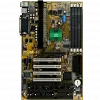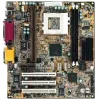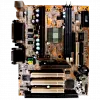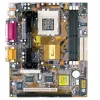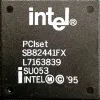Slot 1 refers to the physical and electrical specification for the connector used by some of Intel's microprocessors, including the Pentium Pro, Celeron, Pentium II and the Pentium III. Both single and dual processor configurations were implemented.
With the introduction of the Pentium II CPU, the need for greater access for testing had made the transition from socket to slot necessary. Previously with the Pentium Pro, Intel had combined processor and cache dies in the same Socket 8 package. These were connected by a full-speed bus, resulting in significant performance benefits. Unfortunately, this method required that the two components be bonded together early in the production process, before testing was possible. As a result, a single, tiny flaw in either die made it necessary to discard the entire assembly, causing low production yield and high cost.
Intel subsequently designed a circuit board where the CPU and cache remained closely integrated, but were mounted on a printed circuit board, called a Single-Edged Contact Cartridge (SECC). The CPU and cache could be tested separately, before final assembly into a package, reducing cost and making the CPU more attractive to markets other than that of high-end servers. These cards could also be easily plugged into a Slot 1, thereby eliminating the chance for pins of a typical CPU to be bent or broken when installing in a socket.
The form factor used for Slot 1 was a 5-inch-long, 242-contact edge connector named SC242. To prevent the cartridge from being inserted the wrong way, the slot was keyed to allow installation in only one direction. The SC242 was later used for AMD's Slot A as well, and while the two slots were identical mechanically, they were electrically incompatible. To discourage Slot A users from trying to install a Slot 1 CPU, the connector was rotated 180 degrees on Slot A motherboards.
With the new Slot 1, Intel added support for symmetric multiprocessing (SMP). A maximum of two Pentium II or Pentium III CPUs can be used in a dual slot motherboard. The Celeron does not have official SMP support.
There are also converter cards, known as Slotkets, which hold a Socket 8 so that a Pentium Pro CPU can be used with Slot 1 motherboards. These specific converters, however, are rare. Another kind of slotket allows using a Socket 370 CPU in a Slot 1. Many of these latter devices are equipped with own voltage regulator modules, in order to supply the new CPU with a lower core voltage, which the motherboard would not otherwise allow.
